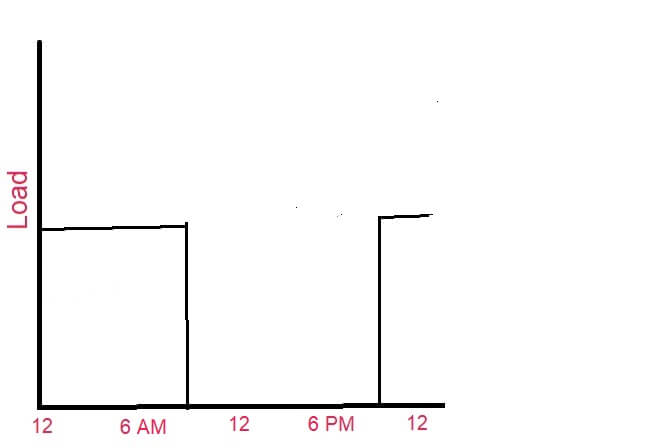WHAT IS AN ELECTRICAL LOAD?
An electrical load on a power system is any electrical appliance that consumes electrical energy and converts it into heat or in other forms. Different electrical devices use electrical power to convert it into another form. For example, Types Of Electrical Loads used in day-to-day activities are resistive loads which heaters convert electrical power into heat, and industrial and domestic motors transform electrical energy into motion.
Depending upon the uses of electrical energy, loads on the power system are divided into different categories for easier understanding here we are going to discuss types of electrical loads according to use and classification of loads and load duration curves.
Electrical power system loads are classified into different category
- Residential Loads
- Commercial Loads
- Industrial Loads
- Agricultural Loads
- Municipal Loads
- Traction Loads
Residential load

Residential load uses electrical energy for doing residential works like home appliances, and lighting load. Residential loads are uncertain, they vary with the time of day. In the morning and evening, residential loads are at peak values. The load curve of the residential load is shown in the figure.
These loads are mainly light fans, and domestic appliances like computers, fridges, heaters, micro ovens, irons, dryers, and air conditioning equipment. Residential loads are about 10% to 14% of the total power supplied by the power system.
The main reasons for variation in residential load are city population, per capita income, development, urbanization, living style of people, and environmental conditions.
Residential loads are also affected by weather conditions, in the winter season less electrical energy is consumed for the cooling system but in summer consumption is more. Residential loads face fluctuations during hours of days.
Commercial Loads

Commercial loads occur for a longer period compare to residential loads. These types of loads are mainly electrical energy utilize for commercial shops, schools, colleges, advertising, hoardings, malls, elevator, cinema halls, etc.
Commercial load fluctuations are mainly due to the switching of air-conditioning equipment. These loads vary more depending upon the season. The load duration curve of the commercial load is shown in the above load curve.
Industrial Loads

Industrial loads have constant demand and are considered as base loads. Commercial loads are little affected by seasonal variations and weather conditions. load duration curve is shown in the above image.
These loads mainly include industrial appliances like motors, furnaces, cranes, industrial lighting, computers, elevators, and pumps.
Industrial loads utilize more electrical energy supplied by the utility. This load does not vary with seasonal change having constant demand throughout the day.
Agricultural loads

Agricultural types of loads use electrical energy for doing agricultural activities. Agricultural loads mainly include irrigation pumps, lights, and water pumps.
Agricultural load varies with time. Load factor is generally taken as 15%- 22%Agricultural loads are affected due to seasons, environment, and weather change.
These loads are mostly switched on during the morning and evening. From the above load duration curve, we can see that agricultural loads switched on during the morning and in the evening time.
Municipal Loads
Municipal loads consist of street lights, the electricity required for water supply pumps, and drainage systems. for water supply water is pumped to the overhead tank using an electric pump, overhead water tank pumping is carried out during the off-peak time. like during nighttime. It improves the load factor of the power system.
Traction Loads
These types of loads mainly include trains, traction loads have wide variations. during morning hours it reaches peak value and during afternoon loads start decreasing and again rise to peak value during evening time.